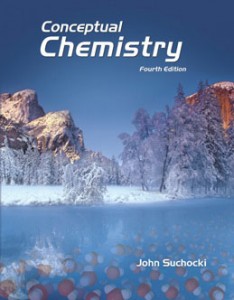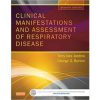Test Bank for Conceptual Chemistry 4th Edition Suchocki
$55.00 Original price was: $55.00.$29.99Current price is: $29.99.
Test Bank for Conceptual Chemistry, 4th Edition: Suchocki
This is completed downloadable of Test Bank for Conceptual Chemistry 4th Edition Suchocki
Instant download Conceptual Chemistry 4th Edition Suchocki Test Bank after payment

Description
- ISBN-10 : 0136054536
- ISBN-13 : 978-0136054535
A conversational and clear writing style aimed at engaging students has made John Suchocki’s Conceptual Chemistry a leader in liberal arts chemistry. This engaging text presents chemistry conceptually, building a base from which the non-science major may view the world around them more perceptively by helping them visualize the behavior of atoms and molecules to understand our macroscopic environment.
The dynamic media program includes a wealth of Interactive Figures™, Videos, and Interactive Tutorials developed specifically for students taking liberal arts chemistry. Instructors also have a wide array of electronic support materials on the Instructor Resource CD-ROM set, including JPEGs of all figures from the book, PowerPoint ® Lecture Outlines and Clicker Questions, and more.
Features
• A conversational and clear writing style engages student interest.
• In-text Concept Checks pose a question followed by an immediate answer. These questions reinforce ideas just presented, before a student moves on to new concepts, and help students synthesize ideas from across the chapter.
• Calculation Corners appear in selected chapters. They are included so that students can practice the quantitative-reasoning skills needed to perform chemical calculations.
– In each Calculation Corner, an example problem and answer show students how to perform a specific calculation; then their understanding is tested in a Your Turn section.
– None of the calculations involves skills beyond fractions, percentages, or basic algebra.
• Short FYI paragraphs in the margins are included in each chapter. These paragraphs highlight interesting information relating to the adjacent chapter content.
New to this Edition
• Each chapter now opens up with the Suchocki’s hallmark Hands-On Chemistry activities. These allow students to experience concepts related to chemistry outside of a formal laboratory setting. These activities can be performed using common household ingredients and equipment.
• The Main Idea statements open each chapter and encapsulate the primary message of the chapter. Students immediately get a sense for the overarching idea they will read about in the chapter.
• In-the-margin Reading Check questions teach students to pay attention to key points as they read and to pause and reflect on them at the end of each section. The answer to the question is set in bold faced font in the section.
• The “In the Spotlight” interchapter essays of the third edition were revised and repackaged as a set of “Contextual Chemistry” essays that highlight the concepts of chemistry within the context of society. Nine essays from the third edition were updated and put together with five new essays to give a total of 14 essays, which is two more than the third edition.
• T he end-of-chapter review was reformatted to follow Bloom’s taxonomy of learning:
– Summary of Terms (Knowledge)
– Reading Check Questions (Comprehension)
– Think and Do (Hands-On Application)
– Think and Solve (Mathematical Application)
– Think and Compare (Analysis)
– Think and Explain (Synthesis)
– Think and Discuss (Evaluation)
– Readiness Assurance Test (RAT)
• The topics and applications of chemistry previously found in the later chapters of the third edition have been brought forward and integrated into earlier chapters for the fourth edition. This allowed for the last four chapters to be trimmed and consolidated into two chapters. The fourth edition is thus two chapters shorter than the third edition with about the same coverage of content.
• The final three chapters, covering optional environmental topics such as: agriculture, air pollution, and energy resources, are now available online only.
Conceptual Chemistry 4th Edition Suchocki Table of contents
Table of Contents
Chapter 1: About Science
Chapter 2: Particles of Matter
Chapter 3: Elements of Chemistry
Chapter 4: Subatomic Particles
Chapter 5: The Atomic Nucleus
Chapter 6: How Atoms Bond
Chapter 7: How Molecules Mix
Chapter 8: How Water Behaves
Chapter 9: How Chemicals React
Chapter 10: Acids and Bases in Our Environment
Chapter 11: Oxidations and Reductions Charge the World
Chapter 12: Organic Compounds
Chapter 13: The Nutrients of Life
Chapter 14: Medicinal Chemistry
Chapter 15: Optimizing Food Production
Chapter 16: Protecting Water and Air Resources
Chapter 17: Capturing Energy
Relate keywords
conceptual chemistry john suchocki 5th edition
conceptual chemistry 5th edition pdf
organic chemistry 4th edition solutions manual pdf
conceptual chemistry textbook pdf











